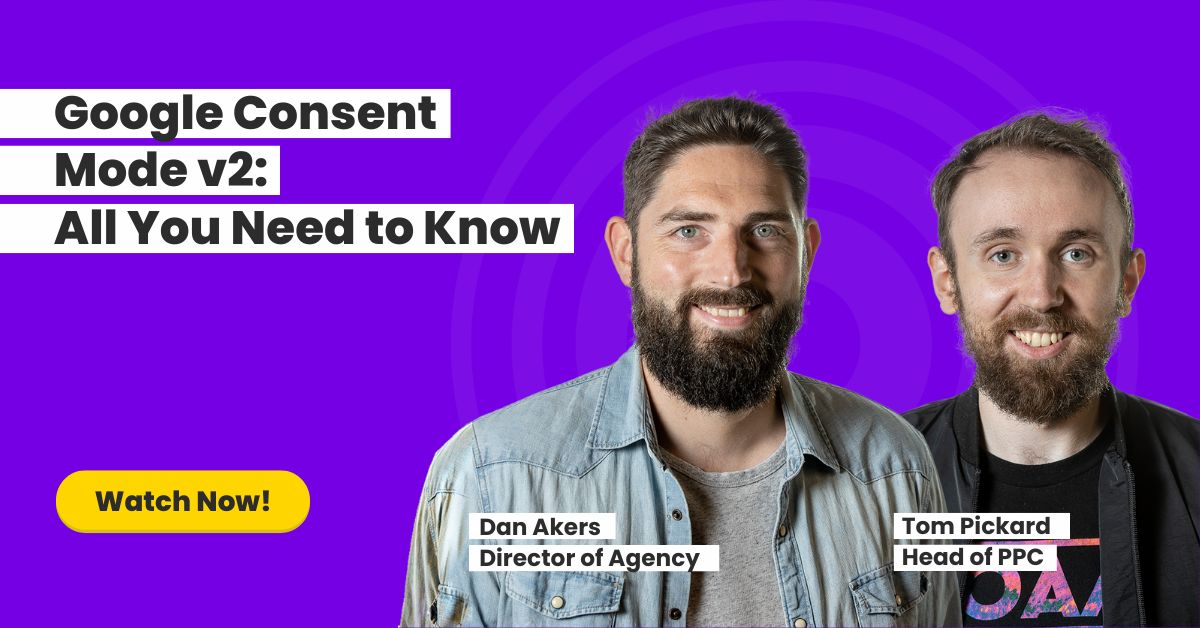We recently hosted an online webinar about the newly-introduced Google Consent Mode v2 and its implications for digital marketers. If you’d like to watch the recording, please see below or here, otherwise please see the key takeaways from this webinar below. Or head to our step-by-step guide to setting up Google Consent Mode v2 in Google Tag Manager.
Google Consent Mode v2
Google Consent Mode v2 has been introduced following increased scrutiny on some of the tech giants with regard to data privacy and compliance. The deadline for Google Consent Mode was officially 6th March 2024. Google Consent Mode v2 allows websites to manage user consent for tracking activities such as ad personalization and measurement cookies. By implementing GDPR-compliant cookie banners, it allows websites to ensure that they respect their user/visitor preferences whilst still collecting essential data for marketing purposes. Marketers must therefore ensure that they comply with Google Consent Mode v2 and data privacy regulations whilst also striking a balance to target, and leverage anonymized data to gain user behavioural insights.
Key takeaways from our webinar:
Understanding the new changes:
Consent Mode v2 is Google’s response to the evolving landscape of data privacy regulations, particularly in the EU. It addresses the need for websites to obtain user consent for tracking activities, such as ad personalization and measurement cookies.
The Regulatory Context
In recent years, there has been increased scrutiny on tech giants regarding data privacy and compliance. With the EU designating companies like Google as online gatekeepers, there’s a heightened focus on ensuring transparency and accountability in data handling practices.
Key Features of Consent Mode v2
Consent Mode v2 primarily focuses on two aspects: ad personalization and measurement cookies. It offers a structured approach to managing user consent through GDPR-compliant cookie banners, allowing websites to respect users’ preferences while still collecting essential data for marketing purposes.
How to Implement
Implementing Consent Mode v2 involves two main approaches: basic or advanced. The basic approach utilizes a standard cookie consent banner, while the advanced approach provides additional insights by signalling user interactions even if the user rejects cookies. For the full ‘How To’ on implementing Consent Mode V2 in GTM please check out our step-by-step guide here.
Next steps…
Make sure you’ve implemented Google Consent Mode v2! After that, as the rules and regulations and marketing landscape evolve, it’s essential to keep up-to-date and compliant with data privacy regulations as it’s likely that this is just the beginning of ongoing changes.
If you’d like any help implementing Consent Mode v2 or you would like advice on how to connect and consolidate all your marketing data – plus report at the click of a button, simply get in touch at team@askbosco.com




